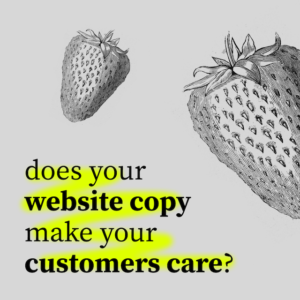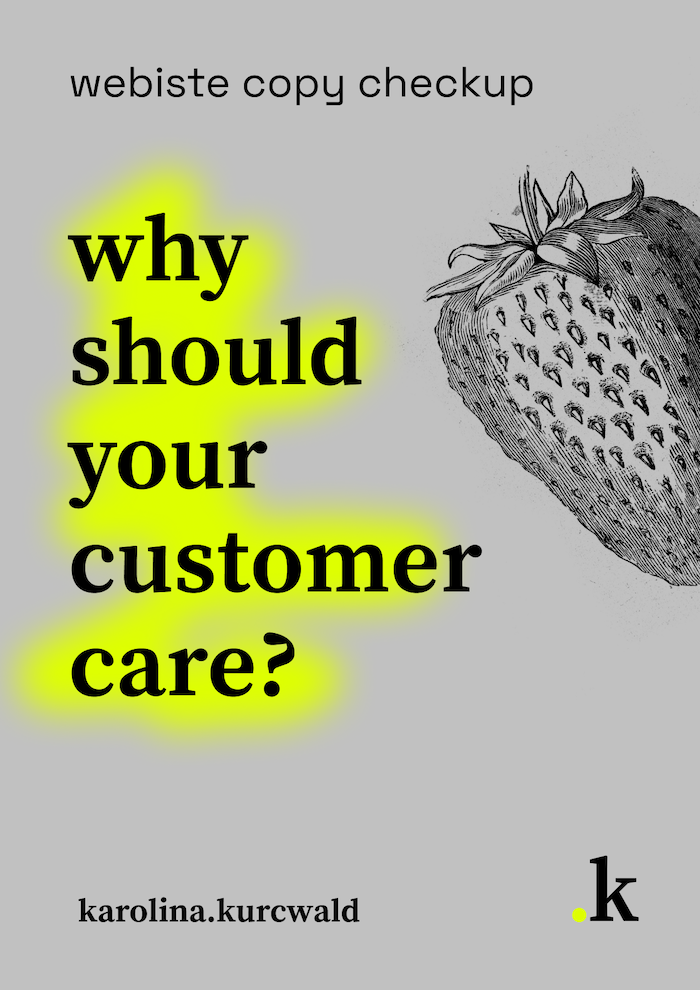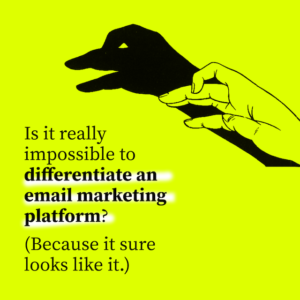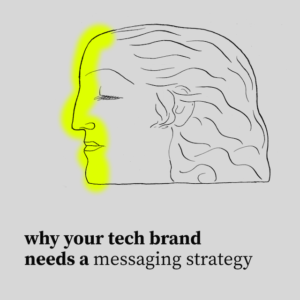

I get it: you’ve put up your website (or landing page) for your brand, your product, or your service. And you’re proud of what you’re doing (you should be!) You want to impress your readers. You want them to know how great you are. But… it’s all “you, you, you.” And have you ever impressed someone by talking only about yourself?
I’ve seen it all too many times. Headlines starting with:
- “We are blah blah blah.”
- “We do yada yada.”
- “The biggest/best/easiest/most popular platform in the universe!”
And I’m sure you’ve seen’em too. Maybe on your own website?
They’re all great examples.
Of what you shouldn’t do, though.

Let me tell you why.
Yes, I know it’s your website
(Hello?!)
And you obviously have something interesting to offer (I hope.)
And there’s nothing exactly wrong with talking about yourself – we all like to do it (although some more than others.)
But the key here is taking a walk in your customer’s shoes. Because *your* website is a place *they* come for help.
Say you’re the visitor coming across your website searching for a tool, a platform, or some kind of expert services.
Which appeals more to you?
- A website headline screaming: “Pick me! I’m the bestest! Better than my competitors! There’s no one like me! BUY NOW!”
- Or a headline directly addressing a problem that’s been on your mind for some time now – and that you’re actually looking for a solution to. Written in the second person. Focusing on “you” – the customer, and not “me” or “us” – the company, the expert, the tool.
What’s more likely to make you want to immediately scroll down for more?
I have a hypothesis here. But let me dig in some more.
Shifting the perspective
See, I studied cognitive linguistics (and especially in translation.) Which made me first realize the major shifts in perspective that can be caused by seemingly minor changes in wording (like “come” and “go”, active/passive voice, prepositions, and yes, of course, the person.)
This is where I digress for a moment – but not so much.
For my MA thesis (whose only digital copy I have is on – wait for it – a floppy disk! You know, that weird “save” symbol in Microsoft Word?) I translated parts of Irvine Welsh’s “Filth” from English, with a focus on (yes, you guessed it) narrative perspective in translation.
Why I picked this book (apart from enjoying Irvine Welsh’s writing) in this specific context was that it didn’t just have one narrator with a single perspective.
Books often have either a first-person or third-person narrator, throughout the story. But sometimes, these perspectives shift, depending on who’s telling the story. And in “Filth”, there are at least three narrators, with different points of view, and speaking in very distinct voices. What’s unusual is that they intertwine, overlap, and sometimes narrate at the same time. And in the end (spoiler alert, if you haven’t read it), all turn out to belong to the protagonist (who also happens to have a tapeworm, and that tapeworm also happens to narrate parts of the book. I know.)
As a result of this, some of the pages of the book look like this:



(Imagine deciphering what’s underneath “the tapeworm” for translation, made even harder by the Scottish slang. Plus translating all the profanities for an academic paper. But hey, I do like me a writing and translating challenge.)
And it’s up to the reader to figure out who’s really speaking and when.
But why exactly am I telling you this?
It’s pretty darn simple. By making choices between writing in the first or third person, singular or plural, you’re shifting the perspective for the reader. And you’re telling very different stories.
One of them is about you. Which is okay, if someone wants to listen and get to know you.
But what if you want to convince them to do something (like sign up, buy, or even just read on.) Get them to act and really trust in what you’re offering.
In that case, your customer is probably not interested in the story told from your perspective. They want to know what they can get.
And I mean, you’re great and all. But your customer came to you to solve their problem
So shift the perspective.
Instead of saying:
“We’re the greatest (easiest/most reliable/cheapest/whateverest) marketing automation software in the world”
Try focusing on an actual problem that might be on your customer’s minds (and here’s a way to find out what it might be.)
Let’s say it’s “sending automated emails that are more relevant because they’re timely and personal.”
Use that benefit in the headline. But don’t just stop there. Shift the perspective.
So, try not saying:
“We help you send more relevant emails”
(See how that’s still about you?)
Use your customer’s perspective:
“Send timely, personal emails your customers can relate to – at scale”
This time it’s about your customer and their customers. You’re telling their story.
Shifting the perspective is a matter of using the right words (changing the person, the verbs and prepositions, etc.)
But it’s not exactly enough.
So what?
A quick technique I like to use to make sure I’m telling the customer’s story is using the “so what?” test.
It helps you determine whether you’re actually telling your customer’s story, or talking about yourself again.
Put on those customer shoes again. (Got ’em? Good.)
Now, look at your headline. Or your subhead. Or the lede in your article.
And ask yourself: “So what?”
Now quickly put your marketer shoes back on and see if you can quickly answer that question. Bad news is, if that headline doesn’t already answer it, you’re in trouble. (As in, your customer, in their customer shoes, might walk away, without ever scrolling down, without clicking the CTA button, or taking any action at all.)

Because the story your headline is telling is just not relevant to them. And they probably see no reason why it should matter to them, anyway.
See?
Of course, perspective is one thing. A specific, compelling problem your customer is facing is another one. But that’s a story for another post.
And in the meantime, do yourself a favor. Try standing out from the sea of same “we”-focused copy the internet is already full of, with a customer-centered copy that’ll make your visitors feel like you care. Not just about yourself.
(Even though self-care is important.)
Now go on, go to your website, read the headline, and ask yourself: so what?
What was your answer?
Got time to read more?

Download my website copy checkup and see if the copy on your website talks about what really matters to your customers.
see if they care →


